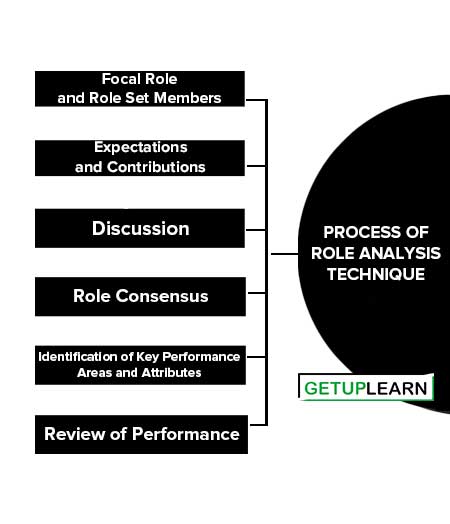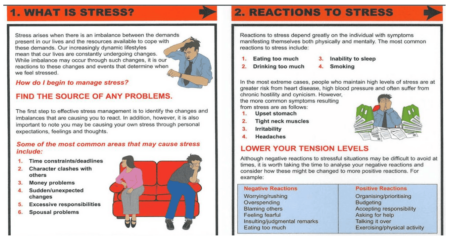Table of Contents
What is Role Analysis Technique?
The role analysis technique (RAT) intervention is designed to clarify role expectations and obligations to team members and to improve team effectiveness. This technique is particularly applicable for new teams, but it may be helpful in established teams where role ambiguity or confusion exists.
Role analysis is a structured exercise to provide an overall picture of what role is supposed to achieve, the rationale for its existence in the organization, its interlinkage, and the attributes of an effective role occupant (role holder).
A role is a position occupied by an individual in a social system (organization). It is defined by functions that one performs in response to the expectations of the members of the organization and his own expectation from the position occupied by him. The role being discussed and considered in role analysis is known as Focal Role.
Definition Role Analysis Technique (RAT)
Role analysis is a participatory process which aims at defining the work content of a role in relation to all those with whom the role occupant has significant interaction in the performance of his jobs.
Getuplearn
Role analysis is a process of analyzing the role of a manager in relation to the roles of other managers or members of the organization who get affected by his performance. Role analysis technique (RAT) is used to help employees to get a better grasp on their role in an organization.
Getuplearn
Advantages of Role Analysis Techniques
The following are the advantages of role analysis techniques:
- Role analysis technique helps to have better role clarity for the team members of the organization.
- It helps in developing the required competency and skills to perform the key functions.
- Circumstantially, role analysis helps to prepare action plans for achieving the objectives under the key functions.
- Role analysis also helps in the self-development of the employee and successful career planning.
- Higher job satisfaction is derived through role analysis techniques. This is because employees get clear with the goals and objectives of them.
- It also enables an improved climate within the organization.
Role Directory
A role directory is a document compiling the key functions, critical attributes, and norms of the various key roles in an organization.
Role analysis leads to the building of a Role directory, which contains role analysis, or the major roles in an organization (department/unit/ company). The purpose of a role directory is to increase the clarity of various roles in the organization, their key functions, critical attributes, and norms. The role directory contains role analysis of several roles. For each role, several aspects are covered in the role directory.

Organizational Position
The organizational position is the point in the hierarchy of the organization. This is reflected in the reporting relationship.
Role Set
The role-set members are the various members in the department or organization with whom the focal role has to interact to accomplish goals.
Mission of Role
This defines the main purpose of the existence of the role in the organization, and its basic and distinct contribution to the organizational goals.
Key Functions
A function is a combination of activities. Key functions are those areas that are prioritized over all other functions agreed upon by the focal role occupant and other role set members.
Critical Attributes
These are certain essential requirements and qualities of a role occupant which are vital to make the role more effective.
Norms
Behavior expected from the focal role occupant and another member of the role set.
Process of Role Analysis Technique
The process of the role analysis technique starts with the identification of the focal role. Later on, role-set members are identified. The expectations and contributions of both focal role holders and role set members are written and discussed.
Finally, with two or more steps, the process ends with a review of performance. The figure below represents the process of role analysis technique in step by step manner:
- Focal Role and Role Set Members
- Expectations and Contributions
- Discussion
- Role Consensus
- Identification of Key Performance Areas and Attributes
- Review of Performance

Focal Role and Role Set Members
Identification of Key Position: The first step is the identification of the focal role initiated by the focal role individual. The role, its place in the organization, the rationale for its existence, and its place for achieving overall organization goals are examined along with specific duties for the office.
The specific duties and behaviors are listed on a chalkboard and are discussed by the entire team. People define their perception of their role and contribution to the overall company effort in front of a group of coworkers.
Expectations and Contributions
The second step examines the focal role holder’s expectations. The Focal Role (Role Holder) has to write down his expectations from others and his contributions to the Role Set Members. The Role Set Members also have to write down their expectations of him and their contributions to the Focal Role.
Discussion
In the third stage, the focal role and role set members hold discussions. In this discussion, they compare the two lists of expectations and contributions. Members and immediate superiors question the role holder about the definition of his task. If there is any confusion in their perceptions, the ambiguity is cleared to all.
Role Consensus
The discussion leads to role consensus which the focal role needs to undertake. The role consensus is arrived at only after a good discussion on the expectations and contributions that are stated in the two lists.
Identification of Key Performance Areas and Attributes
Upon the conclusion of this fourth step, the focal role person assumes responsibility for making a written summary of the role as it has been defined. This summary is called a role profile. The group i.e. focal role and the role set members identifies ‘key performance areas’ in which the focal role needs to concentrate.
The role set members may be asked to indicate the critical attributes in the areas of knowledge, attitude, skills, and behavior required for the focal role. Such critical attributes enable the focal role to perform his role effectively.
Review of Performance
Lastly, the performance of the focal role is reviewed either by the superior of the focal role or by the role set members or any other appraising authority. Necessary feedback is provided to the focal role so that he can correct his weaknesses and consolidate his strengths.
RAT interventions help people to reduce role confusion. This intervention can be a peaceful activity with a high payoff. Often the mutual demands and expectations of interdependent team members are not examined. Role analysis clarifies who is to do what and ensures commitment to the role once it has been clarified.
FAQs Section About Role Analysis Technique
What is the process of role analysis technique?
These are the steps of the process of role analysis technique:
1. Focal Role and Role Set Members
2. Expectations and Contributions
3. Discussion
4. Role Consensus
5. Identification of Key Performance Areas and Attributes
6. Review of Performance.

